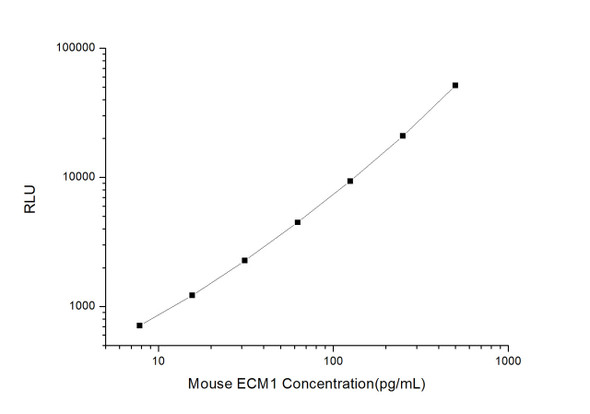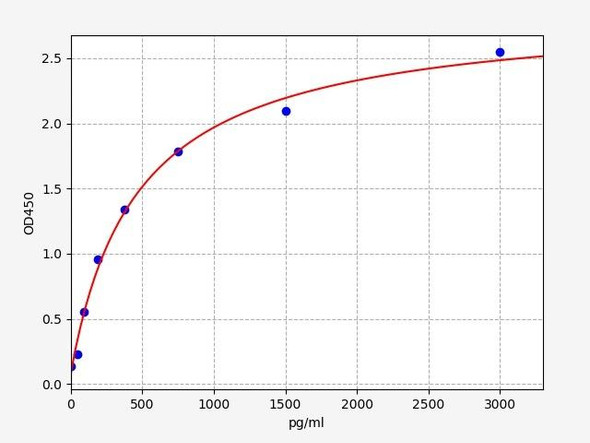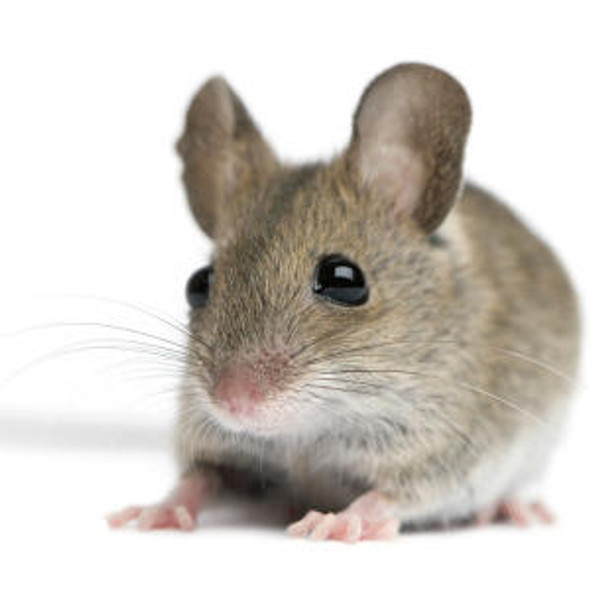Human Cardiovascular ELISA Kits
Human ECM1 (Extracellular Matrix Protein 1) CLIA Kit (HUES01110)
- SKU:
- HUES01110
- Product Type:
- ELISA Kit
- ELISA Type:
- CLIA Kit
- Size:
- 96 Assays
- Sensitivity:
- 7.5pg/mL
- Range:
- 12.5-800pg/mL
- ELISA Type:
- Sandwich
- Reactivity:
- Human
- Sample Type:
- Serum, plasma and other biological fluids
- Research Area:
- Cardiovascular
Description
| Assay type: | Sandwich |
| Format: | 96T |
| Assay time: | 4.5h |
| Reactivity: | Human |
| Detection method: | Chemiluminescence |
| Detection range: | 12.50-800 pg/mL |
| Sensitivity: | 7.50 pg/mL |
| Sample volume: | 100µL |
| Sample type: | Serum, plasma and other biological fluids |
| Repeatability: | CV < 15% |
| Specificity: | This kit recognizes Human ECM1 in samples. No significant cross-reactivity or interference between Human ECM1 and analogues was observed. |
This kit uses Sandwich-CLIA as the method. The micro CLIA plate provided in this kit has been pre-coated with an antibody specific to Human ECM1. Standards or samples are added to the appropriate micro CLIA plate wells and combined with the specific antibody. Then a biotinylated detection antibody specific for Human ECM1 and Avidin-Horseradish Peroxidase (HRP) conjugate are added to each micro plate well successively and incubated. Free components are washed away. The substrate solution is added to each well. Only those wells that contain Human ECM1, biotinylated detection antibody and Avidin-HRP conjugate will appear fluorescence. The Relative light unit (RLU) value is measured spectrophotometrically by the Chemiluminescence immunoassay analyzer. The RLU value is positively associated with the concentration of Human ECM1. The concentration of Human ECM1 in the samples can be calculated by comparing the RLU of the samples to the standard curve.
| UniProt Protein Function: | ECM1: Involved in endochondral bone formation as negative regulator of bone mineralization. Stimulates the proliferation of endothelial cells and promotes angiogenesis. Inhibits MMP9 proteolytic activity. Defects in ECM1 are the cause of lipoid proteinosis (LiP); also known as lipoid proteinosis of Urbach and Wiethe or hyalinosis cutis et mucosae. LiP is a rare autosomal recessive disorder characterized by generalized thickening of skin, mucosae and certain viscera. Classical features include beaded eyelid papules and laryngeal infiltration leading to hoarseness. Histologically, there is widespread deposition of hyaline material and disruption/reduplication of basement membrane. 4 isoforms of the human protein are produced by alternative splicing. |
| UniProt Protein Details: | Protein type:Secreted, signal peptide; Secreted Chromosomal Location of Human Ortholog: 1q21 Cellular Component: extracellular matrix; proteinaceous extracellular matrix; extracellular space Molecular Function:protein C-terminus binding; signal transducer activity; protein binding; enzyme binding; protease binding; interleukin-2 receptor binding; laminin binding Biological Process: ossification; positive regulation of I-kappaB kinase/NF-kappaB cascade; negative regulation of peptidase activity; signal transduction; regulation of transcription from RNA polymerase II promoter; negative regulation of bone mineralization; positive regulation of angiogenesis; biomineral formation; negative regulation of cytokine and chemokine mediated signaling pathway; positive regulation of endothelial cell proliferation; angiogenesis; regulation of T-helper 2 type immune response; inflammatory response Disease: Lipoid Proteinosis Of Urbach And Wiethe |
| NCBI Summary: | This gene encodes a soluble protein that is involved in endochondral bone formation, angiogenesis, and tumor biology. It also interacts with a variety of extracellular and structural proteins, contributing to the maintenance of skin integrity and homeostasis. Mutations in this gene are associated with lipoid proteinosis disorder (also known as hyalinosis cutis et mucosae or Urbach-Wiethe disease) that is characterized by generalized thickening of skin, mucosae and certain viscera. Alternatively spliced transcript variants encoding distinct isoforms have been described for this gene. [provided by RefSeq, Feb 2011] |
| UniProt Code: | Q16610 |
| NCBI GenInfo Identifier: | 48429255 |
| NCBI Gene ID: | 1893 |
| NCBI Accession: | Q16610. 2 |
| UniProt Secondary Accession: | Q16610,O43266, Q5T5G4, Q5T5G5, Q5T5G6, Q8IZ60, A8K8S0 B4DW49, B4DY60, |
| UniProt Related Accession: | Q16610 |
| Molecular Weight: | Observed MW: 55kDaCalculated MW: 19kDa, 46kDa, 60kDa, 63kDa |
| NCBI Full Name: | Extracellular matrix protein 1 |
| NCBI Synonym Full Names: | extracellular matrix protein 1 |
| NCBI Official Symbol: | ECM1 |
| NCBI Official Synonym Symbols: | URBWD |
| NCBI Protein Information: | extracellular matrix protein 1; secretory component p85 |
| UniProt Protein Name: | Extracellular matrix protein 1 |
| UniProt Synonym Protein Names: | Secretory component p85 |
| Protein Family: | Extracellular matrix protein |
| UniProt Gene Name: | ECM1 |
| UniProt Entry Name: | ECM1_HUMAN |
As the RLU values of the standard curve may vary according to the conditions of the actual assay performance (e. g. operator, pipetting technique, washing technique or temperature effects), the operator should establish a standard curve for each test. Typical standard curve and data is provided below for reference only.
| Concentration (pg/mL) | RLU | Average | Corrected |
| 800 | 51601 53683 | 52642 | 52616 |
| 400 | 21695 21773 | 21734 | 21708 |
| 200 | 10045 9371 | 9708 | 9682 |
| 100 | 4494 4610 | 4552 | 4526 |
| 50 | 2261 2115 | 2188 | 2162 |
| 25 | 1074 1046 | 1060 | 1034 |
| 12.50 | 506 512 | 509 | 483 |
| 0 | 26 26 | 26 | -- |
Precision
Intra-assay Precision (Precision within an assay): 3 samples with low, mid range and high level Human ECM1 were tested 20 times on one plate, respectively.
Inter-assay Precision (Precision between assays): 3 samples with low, mid range and high level Human ECM1 were tested on 3 different plates, 20 replicates in each plate.
| Intra-assay Precision | Inter-assay Precision | |||||
| Sample | 1 | 2 | 3 | 1 | 2 | 3 |
| n | 20 | 20 | 20 | 20 | 20 | 20 |
| Mean (pg/mL) | 41.02 | 79.36 | 381.87 | 44.08 | 80.36 | 385.09 |
| Standard deviation | 4.88 | 7.56 | 33.64 | 4.82 | 7.88 | 33.43 |
| C V (%) | 11.90 | 9.53 | 8.81 | 10.93 | 9.81 | 8.68 |
Recovery
The recovery of Human ECM1 spiked at three different levels in samples throughout the range of the assay was evaluated in various matrices.
| Sample Type | Range (%) | Average Recovery (%) |
| Serum (n=5) | 88-101 | 94 |
| EDTA plasma (n=5) | 96-110 | 103 |
| Cell culture media (n=5) | 89-105 | 96 |
Linearity
Samples were spiked with high concentrations of Human ECM1 and diluted with Reference Standard & Sample Diluent to produce samples with values within the range of the assay.
| Serum (n=5) | EDTA plasma (n=5) | Cell culture media (n=5) | ||
| 1:2 | Range (%) | 92-106 | 103-116 | 96-112 |
| Average (%) | 98 | 109 | 104 | |
| 1:4 | Range (%) | 86-99 | 90-107 | 95-108 |
| Average (%) | 92 | 98 | 100 | |
| 1:8 | Range (%) | 90-106 | 91-106 | 99-114 |
| Average (%) | 98 | 99 | 107 | |
| 1:16 | Range (%) | 95-110 | 102-117 | 90-103 |
| Average (%) | 103 | 108 | 97 |
An unopened kit can be stored at 4°C for 1 month. If the kit is not used within 1 month, store the items separately according to the following conditions once the kit is received.
| Item | Specifications | Storage |
| Micro CLIA Plate(Dismountable) | 8 wells ×12 strips | -20°C, 6 months |
| Reference Standard | 2 vials | |
| Concentrated Biotinylated Detection Ab (100×) | 1 vial, 120 µL | |
| Concentrated HRP Conjugate (100×) | 1 vial, 120 µL | -20°C(shading light), 6 months |
| Reference Standard & Sample Diluent | 1 vial, 20 mL | 4°C, 6 months |
| Biotinylated Detection Ab Diluent | 1 vial, 14 mL | |
| HRP Conjugate Diluent | 1 vial, 14 mL | |
| Concentrated Wash Buffer (25×) | 1 vial, 30 mL | |
| Substrate Reagent A | 1 vial, 5 mL | 4°C (shading light) |
| Substrate Reagent B | 1 vial, 5 mL | 4°C (shading light) |
| Plate Sealer | 5 pieces | |
| Product Description | 1 copy | |
| Certificate of Analysis | 1 copy |
- Set standard, test sample and control (zero) wells on the pre-coated plate and record theirpositions. It is recommended to measure each standard and sample in duplicate. Note: addall solutions to the bottom of the plate wells while avoiding contact with the well walls. Ensuresolutions do not foam when adding to the wells.
- Aliquot 100 µL of standard solutions into the standard wells.
- Add 100 µL of Sample / Standard dilution buffer into the control (zero) well.
- Add 100 µL of properly diluted sample (serum, plasma, tissue homogenates and otherbiological fluids. ) into test sample wells.
- Cover the plate with the sealer provided in the kit and incubate for 90 min at 37 °C.
- Aspirate the liquid from each well, do not wash. Immediately add 100 µL of BiotinylatedDetection Ab working solution to each well. Cover the plate with a plate seal and gently mix. Incubate for 1 hour at 37 °C.
- Aspirate or decant the solution from the plate and add 350 µL of wash buffer to each welland incubate for 1-2 minutes at room temperature. Aspirate the solution from each well andclap the plate on absorbent filter paper to dry. Repeat this process 3 times. Note: a microplatewasher can be used in this step and other wash steps.
- Add 100 µL of HRP Conjugate working solution to each well. Cover with a plate seal andincubate for 30 min at 37 °C.
- Aspirate or decant the solution from each well. Repeat the wash process for five times asconducted in step 7.
- Add 100 µL of Substrate mixture solution to each well. Cover with a new plate seal andincubate for no more than 5 min at 37 °C. Protect the plate from light.
- Determine the RLU value of each well immediately.






